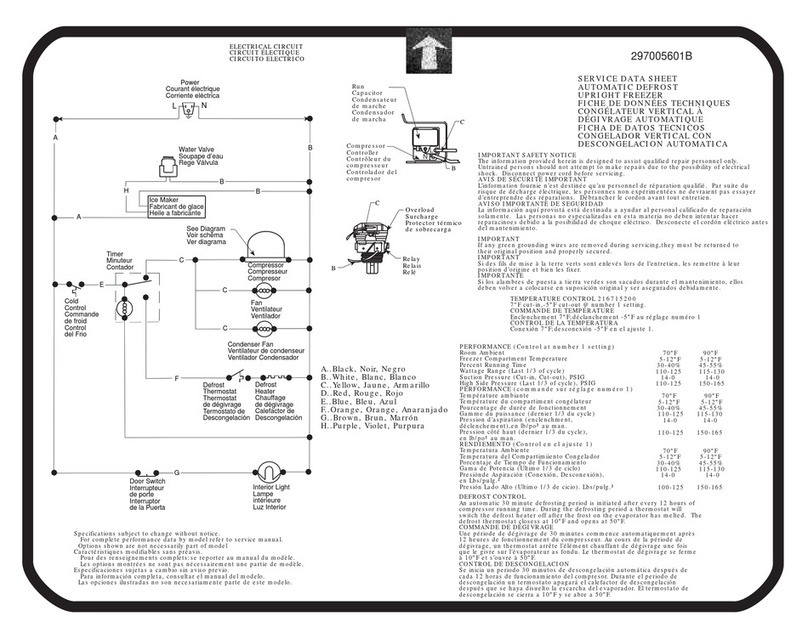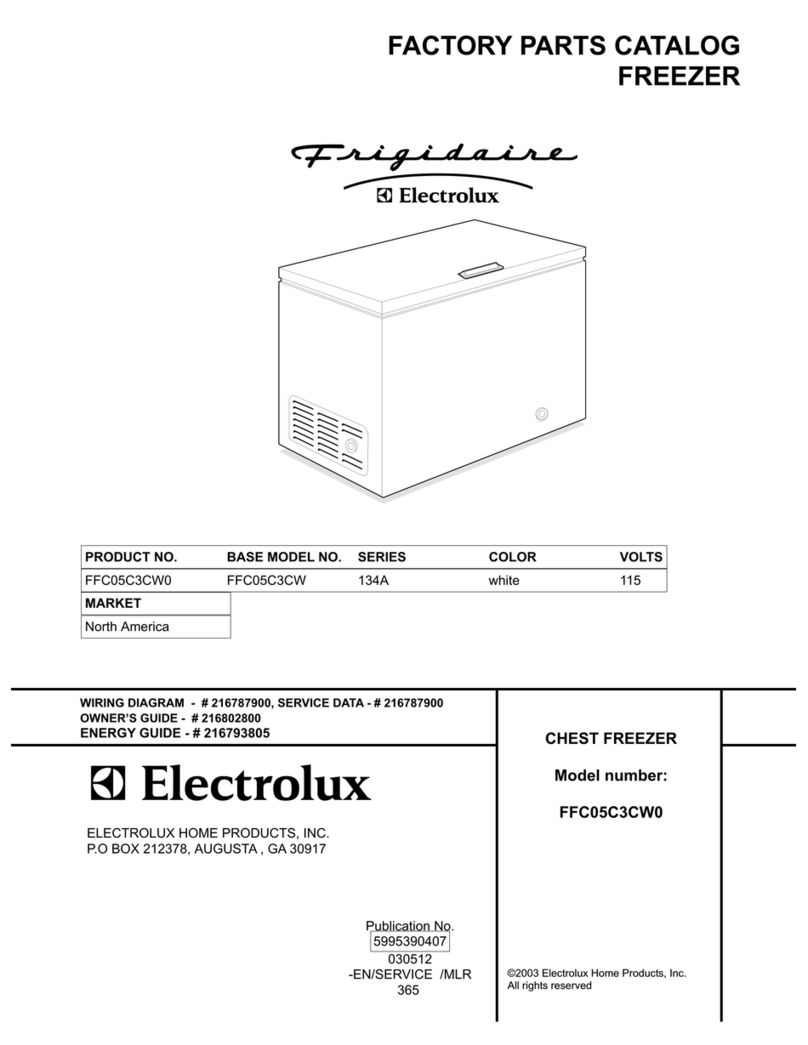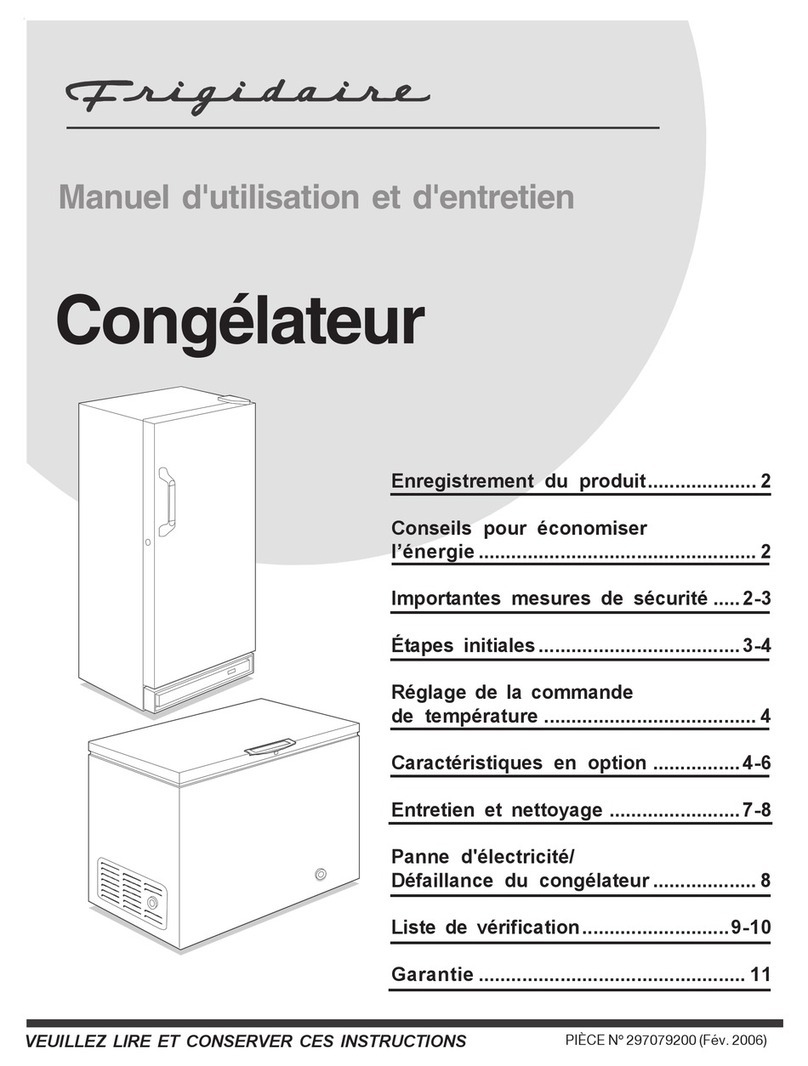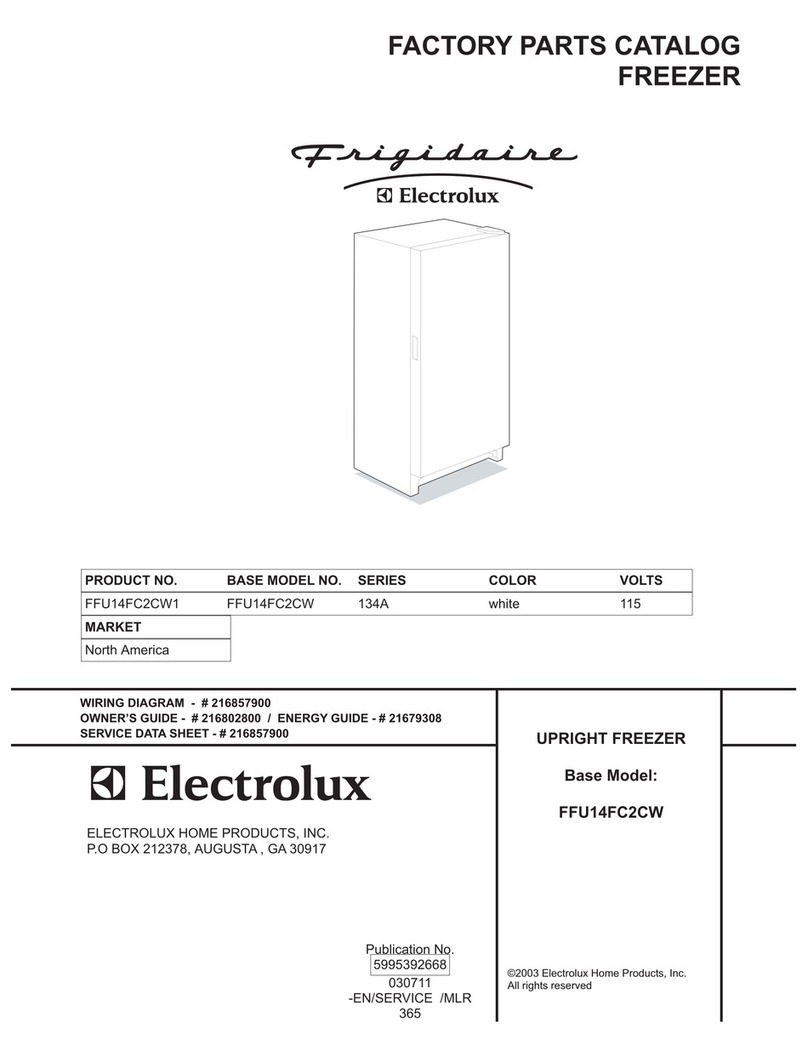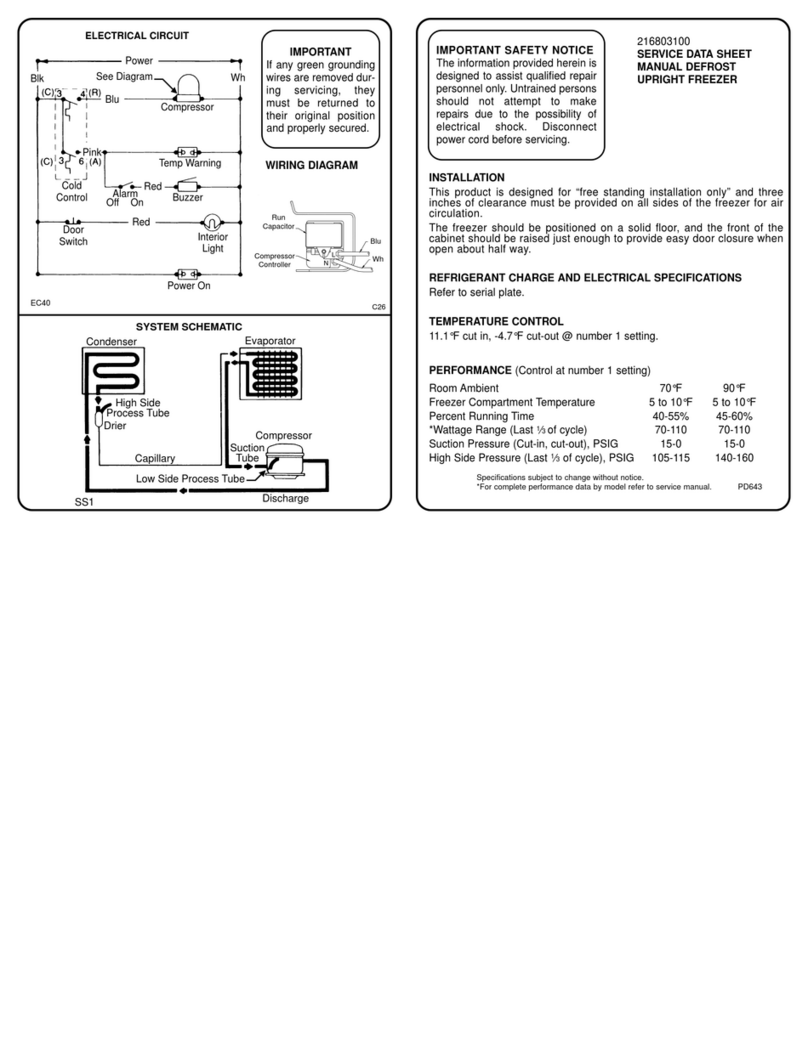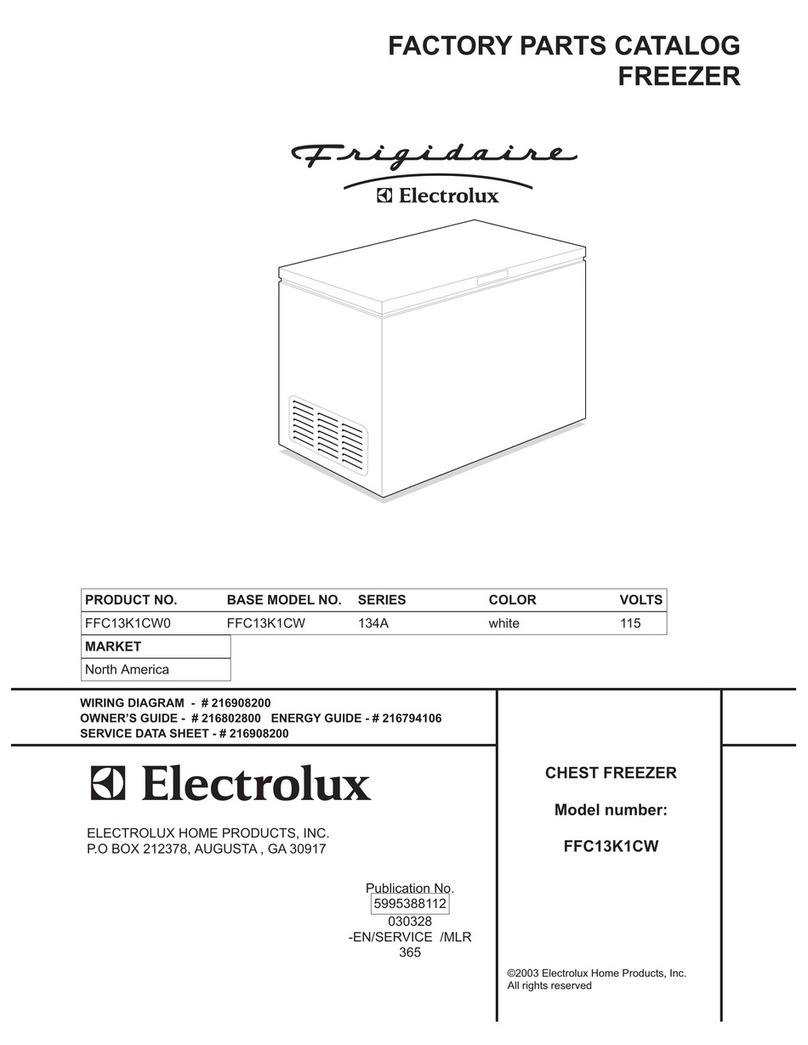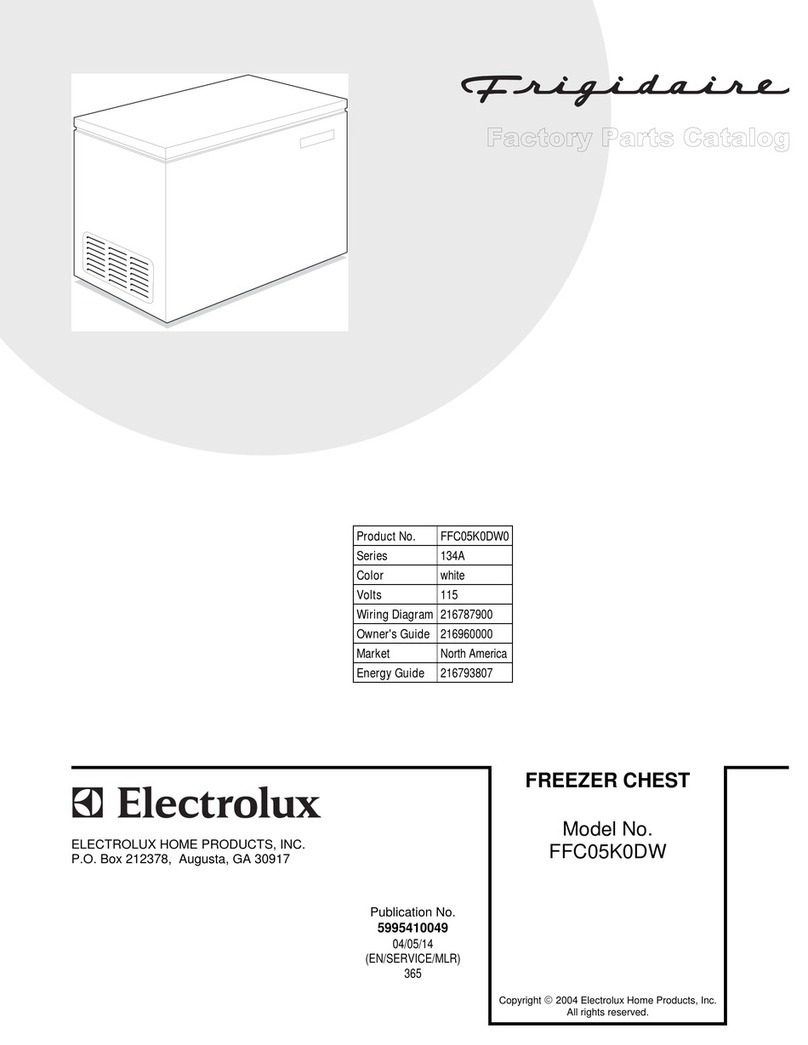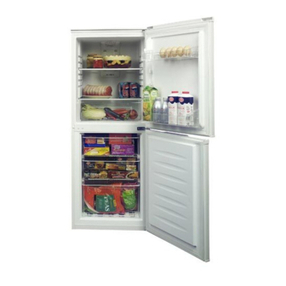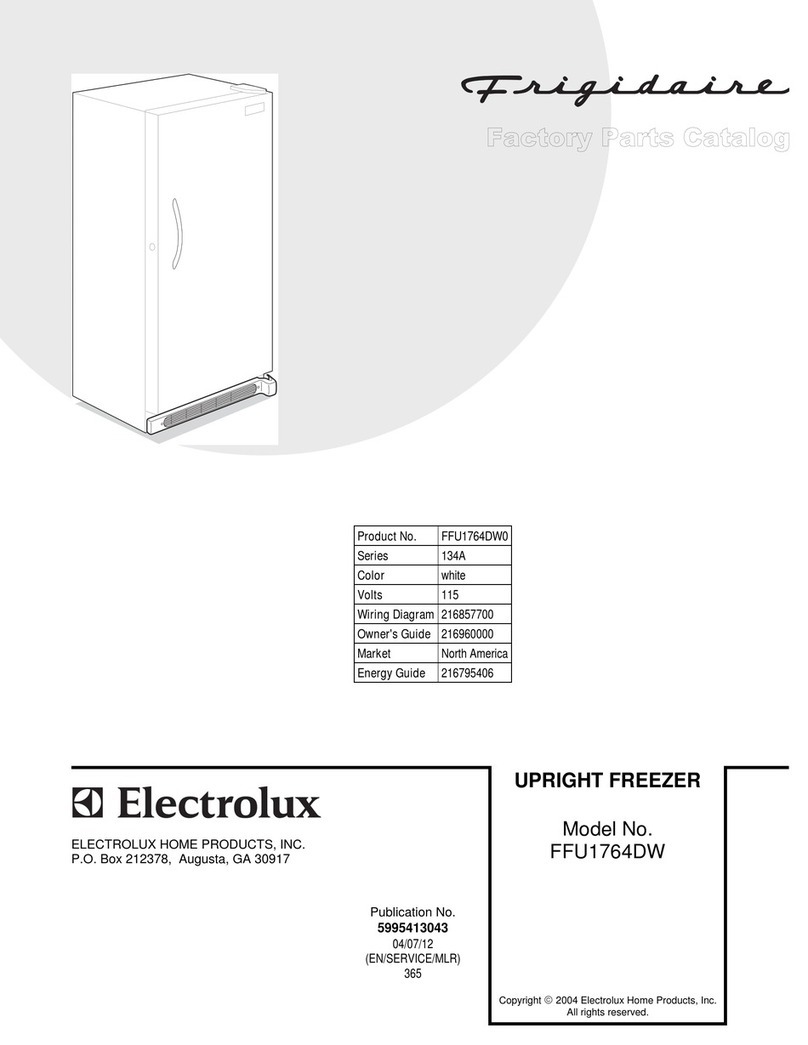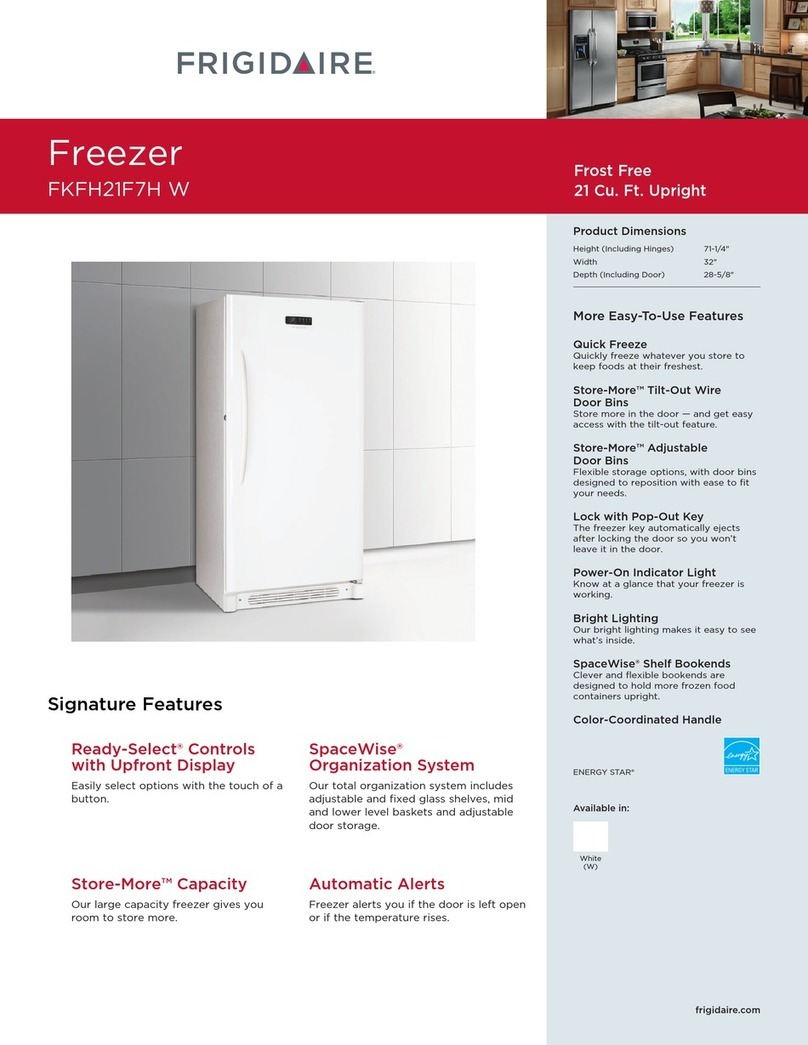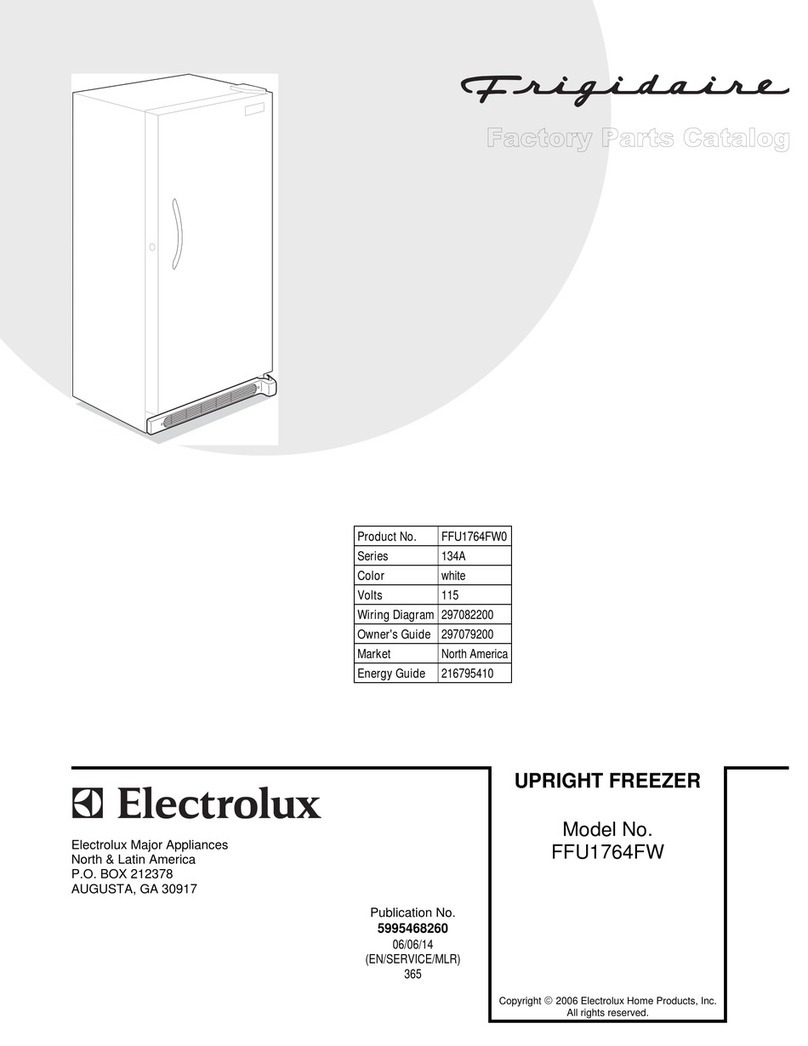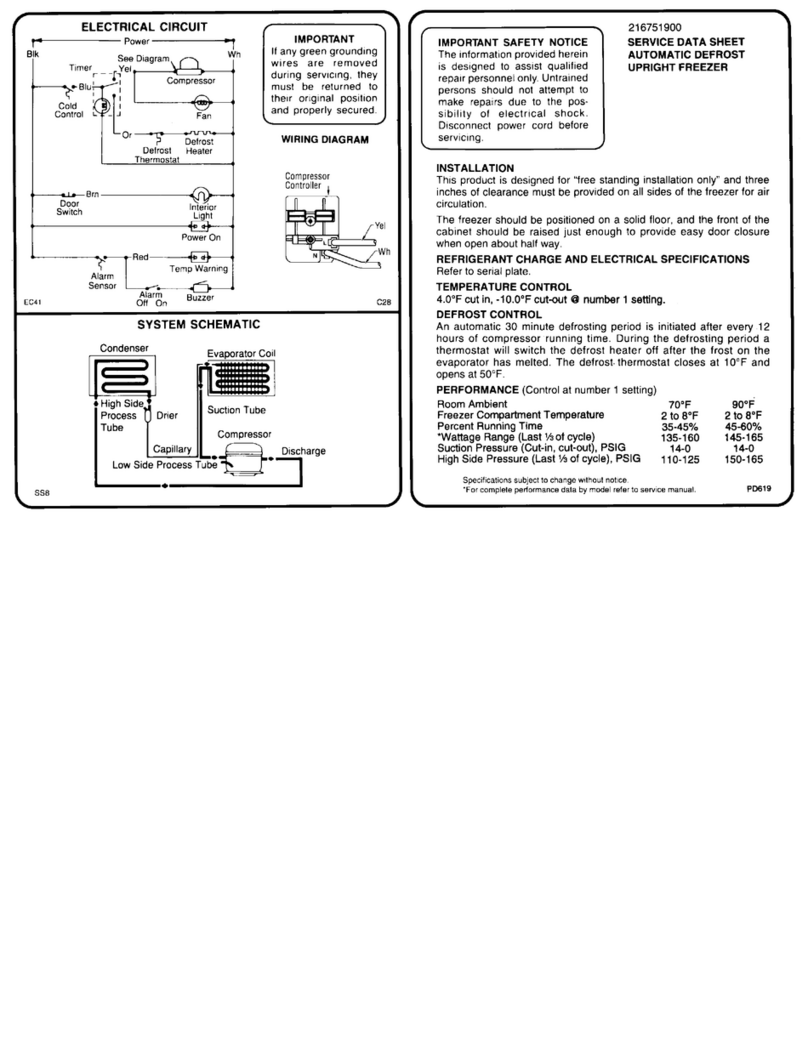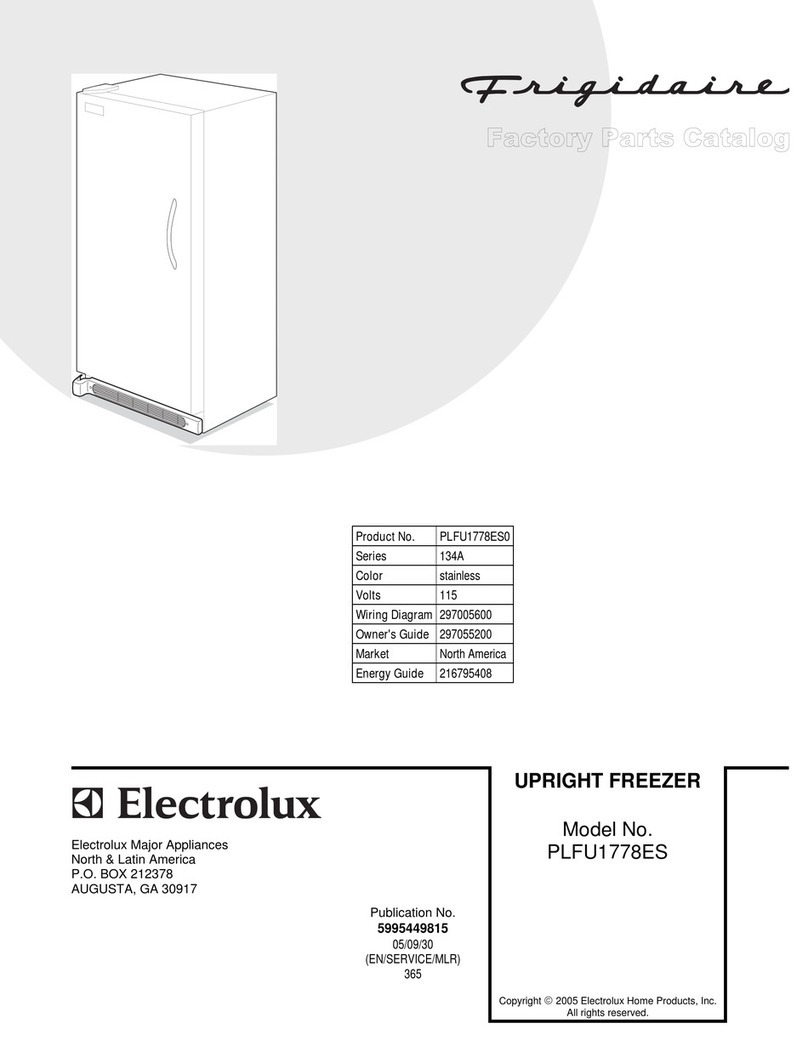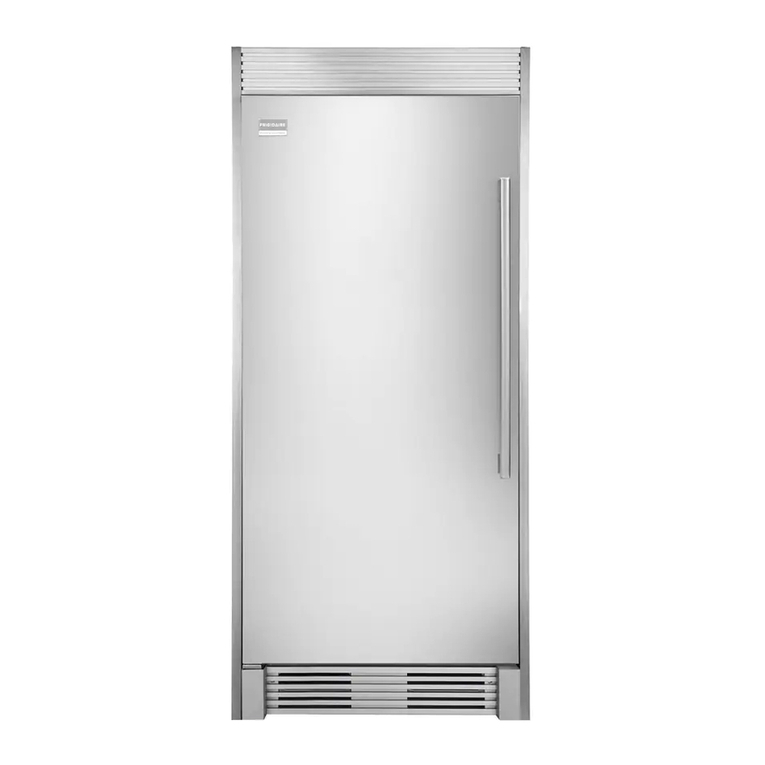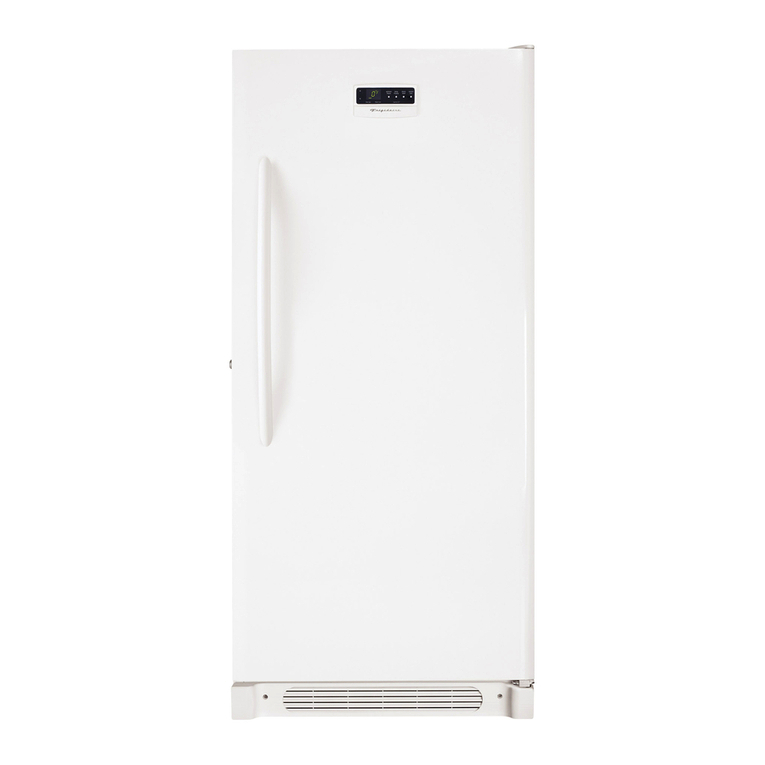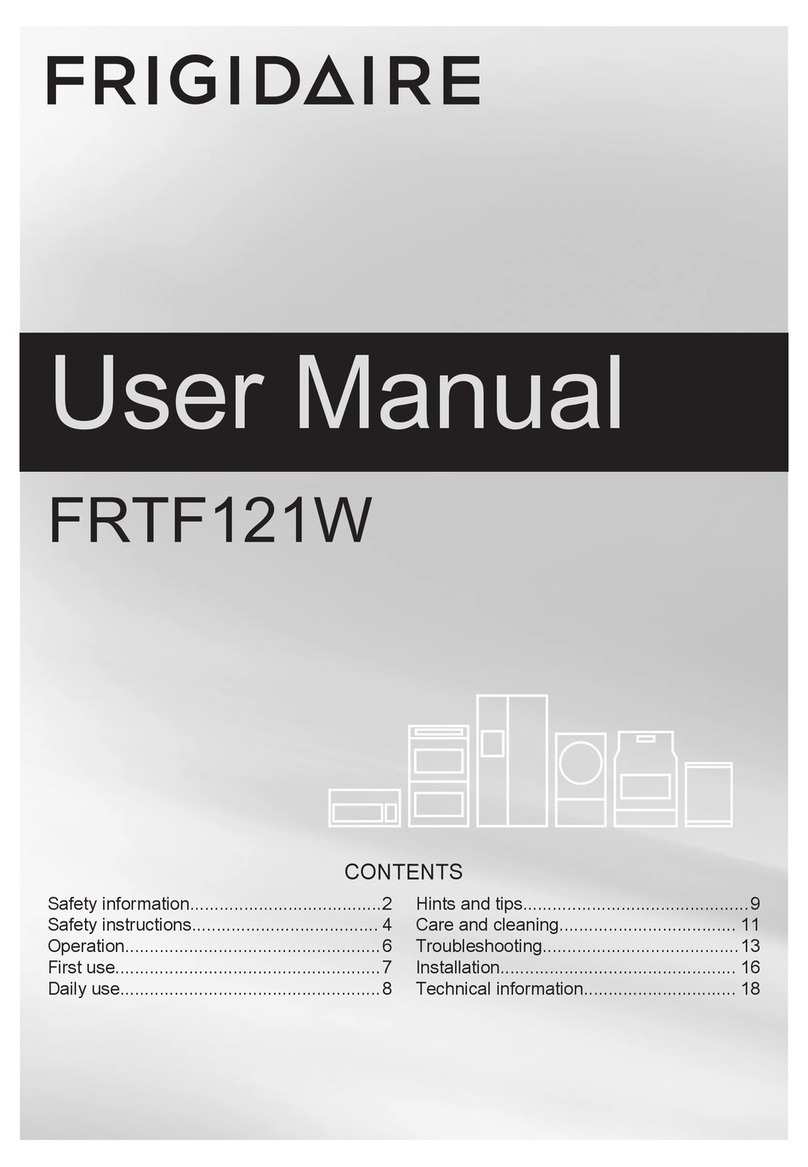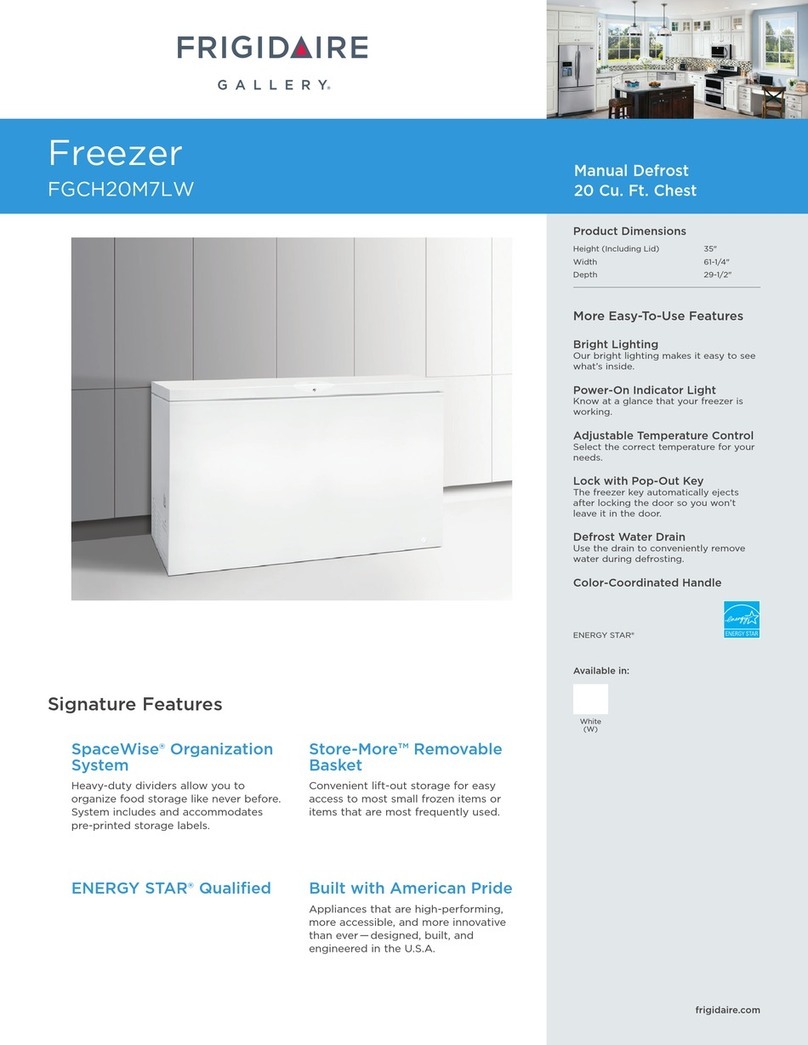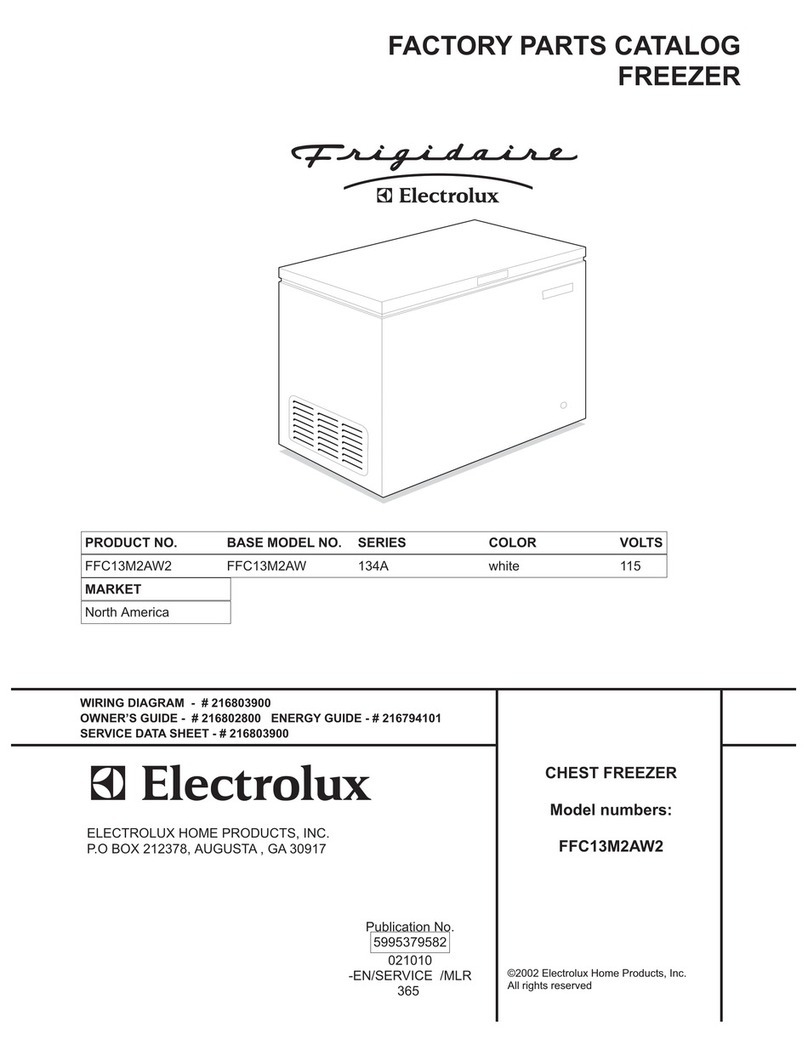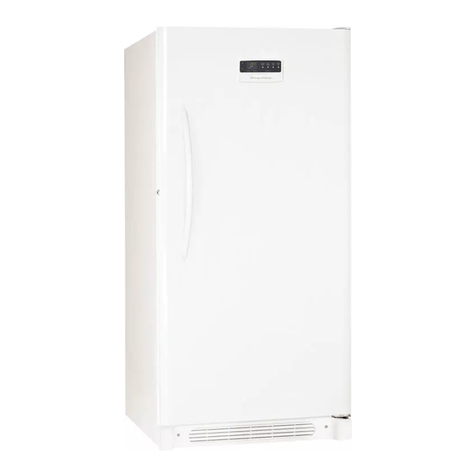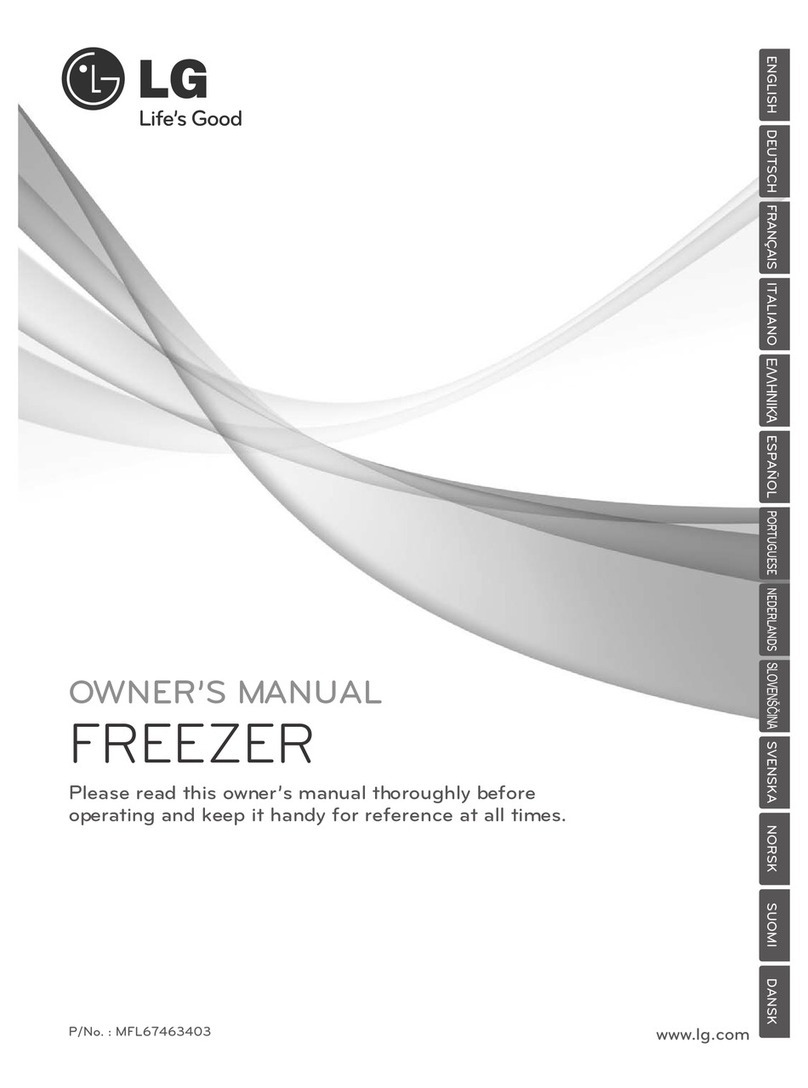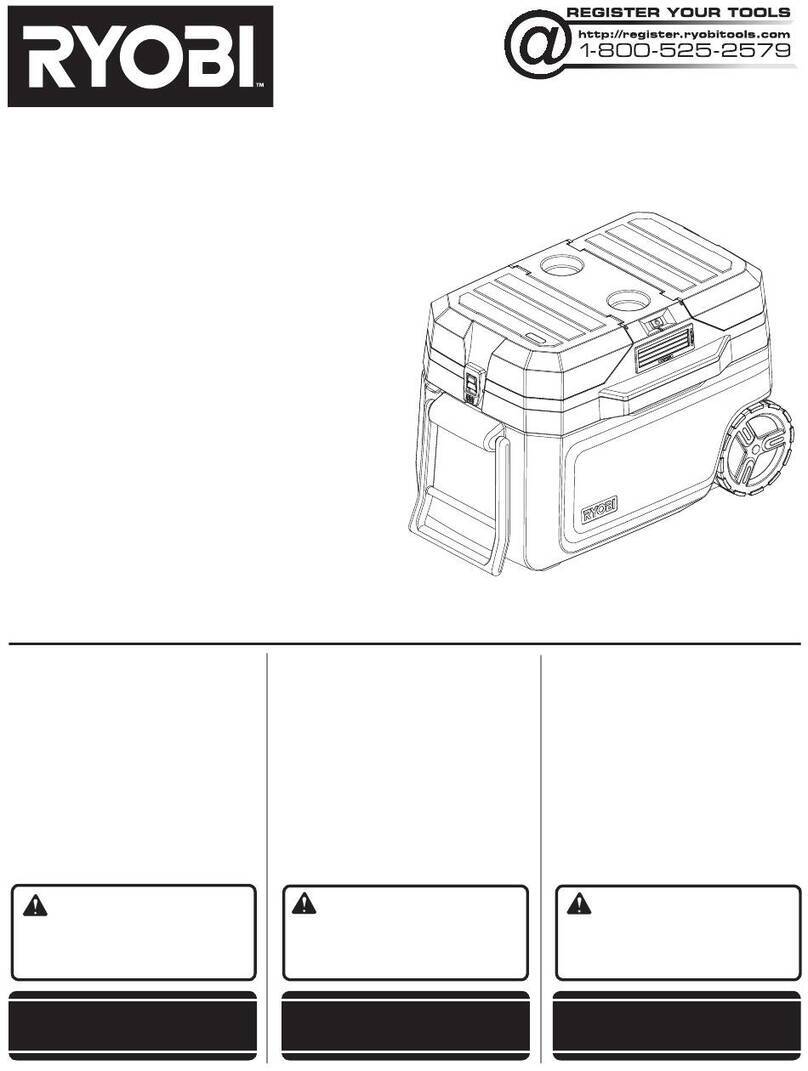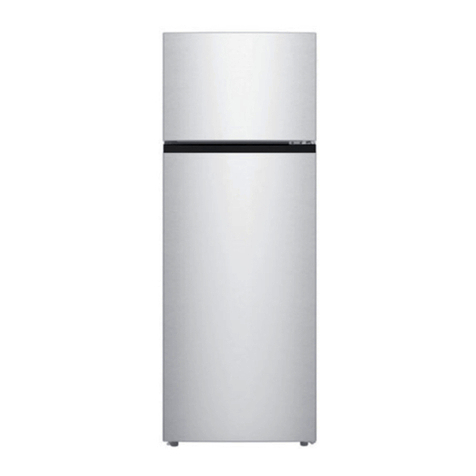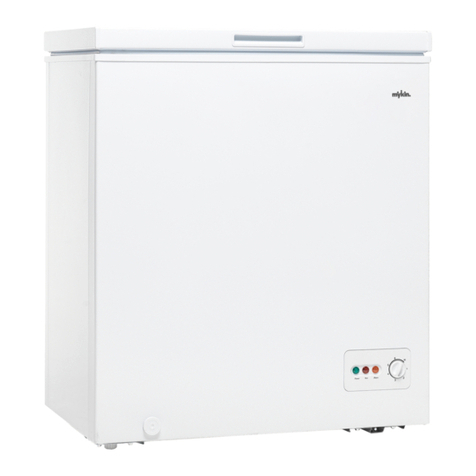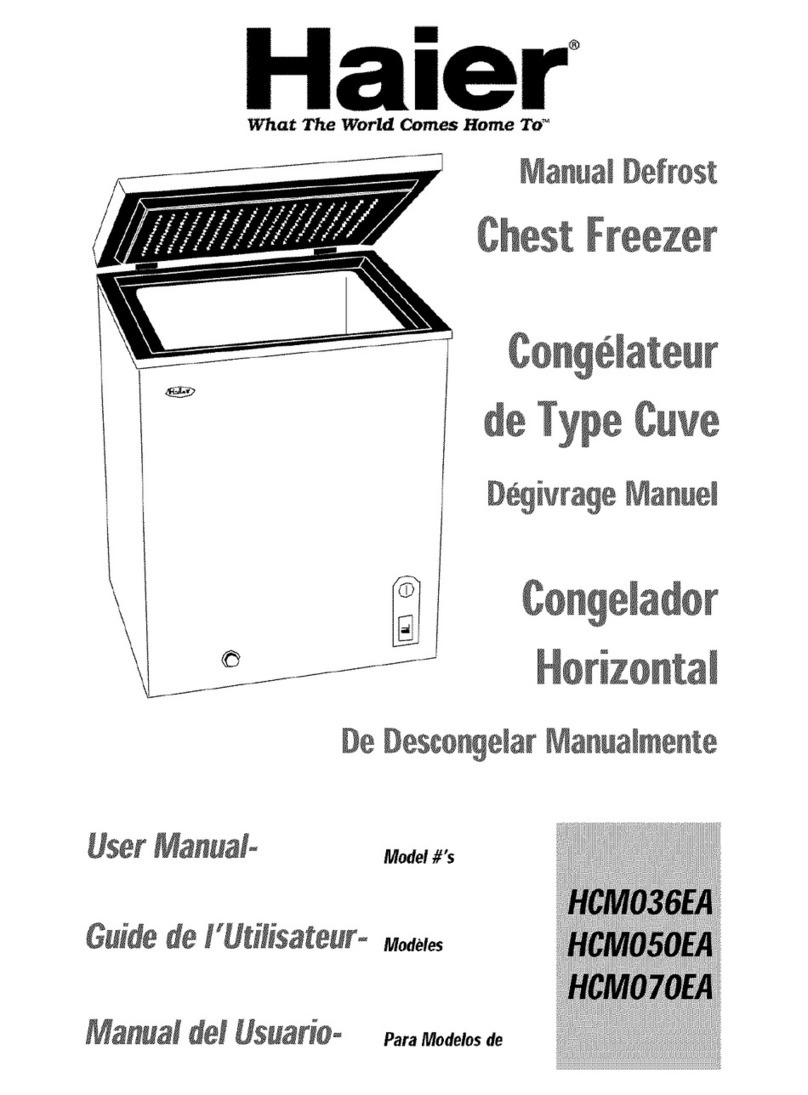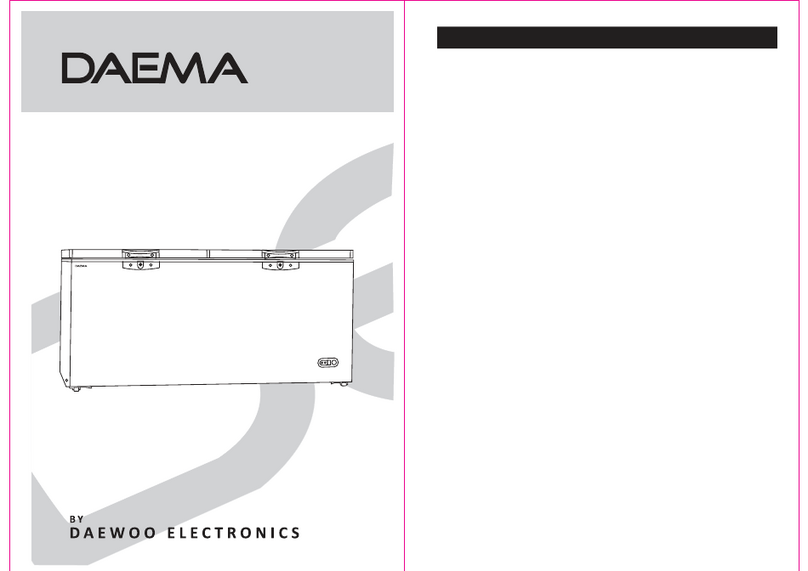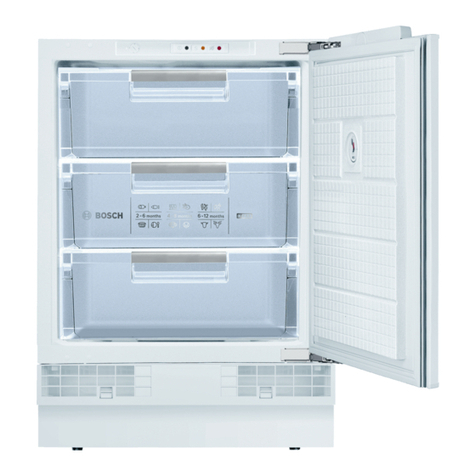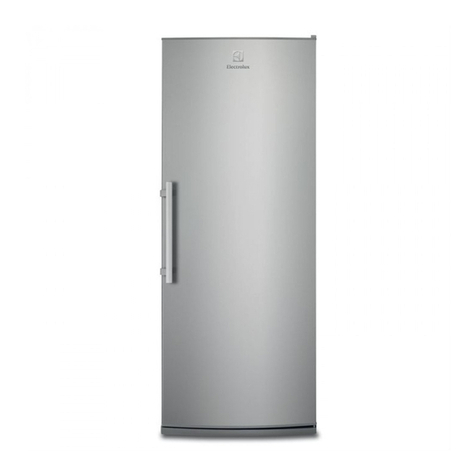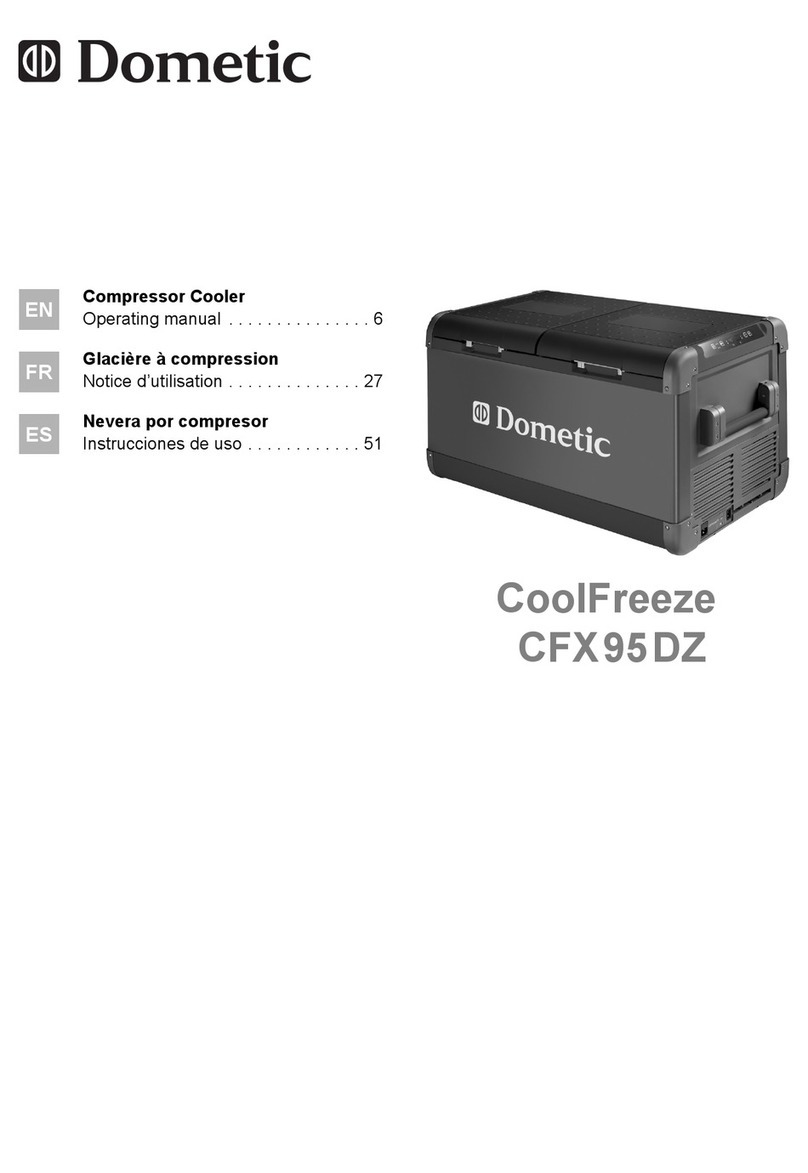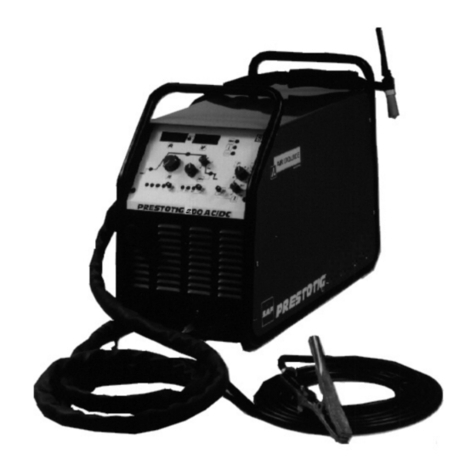
7
Care and Cleaning
Figure 1
Figure 4
Someupright freezers are frost-free and defrost automatically, butshould be cleaned
occasionally.
Between Defrostings
To avoid frequent defrosting, occasionally use a plastic scraper to remove frost.
Scrape with a pulling motion. Never use a metal instrument to remove frost.
Defrosting
It is important to defrost and clean freezer when ¼to ½inch of frost has accumulated.
Frost may tend to accumulate faster on upper part of the freezer due to warm, moist
air entering the freezer when the door is opened. Remove food and leave the door
open when defrosting the freezer.
•On upright models with a defrost drain (Figure 1), remove drain plug on the inside
floor of the freezer by pulling straight out. To access external drain tube on models
with a base panel, first remove the two screws from the base panel. Locate the
drain tube near the left center under the freezer. Place a shallow pan under the
drain tube. Defrost water will drain out. Check pan occasionally so water does not
overflow. A ½inch garden hose adapter can be used to drain the freezer directly
into a floor drain. If your model is not equipped with an adapter, one can be
purchased at most hardware stores. Replace the drain plug when defrosting and
cleaning are completed. If the drain is left open, warm air may enter freezer.
•On chest models with a defrost drain, place a shallow pan or the Divider/Drain
Pan (some models) beneath the drain outlet (Figure 2). A ½inch garden hose
adapter can be used to drain the freezer directly into a floor drain (Figure 3). If your
model is not equipped with an adapter, one can be purchased at most hardware
stores.Pull out the drain plug inside the freezer, andpull off the outside defrost drain
plug (Figure 4). Defrost water will drain out. Check pan occasionally so water does
not overflow. Replace the drain plugs when defrosting is completed.
•Onmodelswithoutadefrostdrain,placetowelsornewspapersonthefreezer bottom
tocatch the frost. The frost will loosen and fall. Removetowels and/or newspapers.
•If the frost is soft, remove it by using a plastic scraper. If the frost is glazed and hard,
filldeeppans with hot water and place them on the freezer bottom. Close the freezer
door.Frostshould soften in about 15 minutes. Repeat this procedure if necessary.
Cleaning the Inside
Afterdefrosting, wash inside surfaces of the freezer with a solution of twotablespoons
of baking soda in one quart (1.136 litres) warm water. Rinse and dry. Wring excess
water out of the sponge or cloth when cleaning in the area of the controls, or any
electrical parts.
Wash the removable parts with the baking soda solution mentioned above, or mild
detergent and warm water. Rinse and dry. Never use metallic scouring pads,
brushes, abrasive cleaners, or alkaline solutions on any surface. Do not wash
removable parts in a dishwasher.
Cleaning the Outside
Wash the cabinet with warm water and mild liquid detergent. Rinse well and wipe
dry with a clean soft cloth. Replace parts and food.
Vacation and Moving Tips
ShortVacations: Leave thefreezer operatingduring vacationsoflessthanthree weeks.
Long Vacations: If the freezer will not be used for several months, remove all food
and unplug the power cord. Clean and dry the interior thoroughly. To prevent odor
and mold growth, leave the freezer door open slightly, blocking it open if necessary.
Moving: Disconnect the power cord plug from the wall outlet. Remove foods, then
defrost, and clean the freezer. Secure all loose items such as base panel, baskets,
and shelves by taping them securely in place to prevent damage. In the moving
vehicle, secure freezer in an upright position, and secure to prevent movement. Also
protect outside of freezer with a blanket, or similar item.
If leaving freezer door
open while on vacation, make certain
that children cannot get into the
freezer and become entrapped.
WARNING
Figure 2
Figure 3
Damp objects stick to
cold metal surfaces. Do not touch interior
metal surfaces with wet or damp hands.
PAN
DEFROST
DRAINPLUG
HOSE
ADAPTOR
DEFROST
DRAINPLUG

